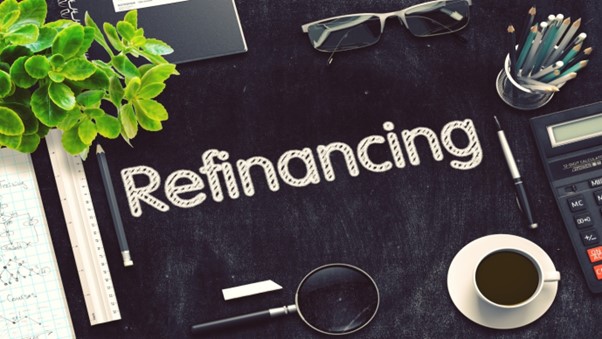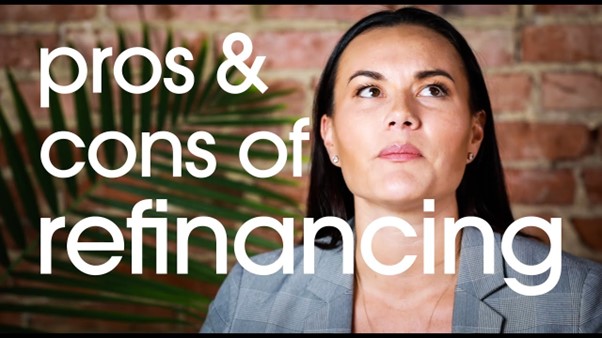
Refinancing is a process through which a borrower takes out a new loan to offset an existing loan(s). Oftentimes, people confuse or interchange the use of the term Debt Consolidation and Refinancing. Sometimes too different regions or countries in the world also interchange the use of the 2 terms.
In countries such as Norway, when we talk about refinancing, it covers both debt consolidation and refinancing as may be delineated in countries such as America. In this article, we will discuss the term refinancing from the Norwegian perspective which means we will be exploring debt consolidation. Additionally, we will share tips on how you can get the best of this financial strategy so stay with us.

We have stated at the beginning of this piece that there is a different between Refinancing and Debt Consolidation but that we will address mainly debt consolidation here. However, we will share a summary of the term refinancing and highlight what makes it different from debt consolidation.
Meanwhile, you may want to visit this site: https://www.nfcc.org/ for more insight.
Refinancing typically has to do with replacing an existing loan with a new one that has better terms and conditions. Often times when we talk of refinancing, the first type of loan that comes to mind is mortgage. This is because it is mortgages that are usually refinanced.
That being said however, other types of loans can be refinanced; even the ones that a borrower can seek debt consolidation for. The main reasons why people seek refinancing are as follows:-
Debt consolidation on the other hand entails combining many ‘small’ debts into one and taking out a lump sum loan to offset the debts. The major benefit of this strategy is the simplification of debt management which makes it easier for borrowers to track their payments and hopefully reduce the overall interest paid on the loans.
The most common debts that are consolidated are credit card debts, personal loans, lines of credit or home equity loans.
Bearing this brief summary of the two terms in mind, we will go on to discuss the pros and cons of refinancing loans or debt consolidation (the pros and cons discussed herein applies in both situations).
Debt consolidation or refinancing has a number of advantages and we will discuss some of the most common ones below:-
When you have different loans with different due dates, chance are high that you will forget at least of them when making monthly payments. This can really make for a messy financial situation because you are sure to get into trouble with the missed payment(s).
With debt consolidation however, you have only one lender to deal with. This gives you a better overview of how much you owe and as such you can make better plans for dealing with the debt.
With a firmer grip on your finances and a better loan with more favourable terms and rates, you can pay off your debts faster.
if you refinance your debts, you can get a longer repayment period. For example, of you have personal loans that have 5-year repayment terms, you can get a refi loan with a 15- year repayment period. This gives you some respite and helps you manage your finances better especially if you have been finding it difficult to make your monthly payments.
With many small loans come different fees but when you have just one loan, you have fewer fees and lower costs. This reduction in the number of fees you have to pay can also translate to substantial savings.
With a refi loan, you get reduced monthly payments which in turn frees up some cash with which you can pay down your debt and also take care of some expenses.
It is pertinent to point out that there are a few cons to consider when thinking or refinancing and they are summarised as follows:-

In addition to the pros and cons of refinancing that we have discussed above, we will go further to give you a list of pros and cons of refinancing with and without collateral.
In this option, the borrower puts down an asset of equal or more value than the amount they are applying for. In most cases, people put down their homes for refi loans and this increases their chances of getting the amount they applied for whether they have payment notices or not.
Below is a summary of the pros and cons:-
The greatest con for borrowing with collateral is the potential risk of the loss of the collateral. In the case of a home, there is a risk of losing the home to foreclosure.
This is the case where a borrower does not need to present collateral. The pros and cons of this option are as follows:-

Now that you have understood the basics of this financial strategy, and seen the pros and cons, find below some tips on how to get the best refinancing:-
When looking for the best option for your refinancing need, it is recommended that you send in as many applications as possible; at least 25 application. That’s quite a lot and may not be possible for a lot of people.
One sure way of meeting the target of reaching art least 25 lenders is by using a loan agent. These professionals work with a network of lenders that they have understanding with. All you have to do with these agents is to fill out one application and provide the necessary documentations. The agent then takes that application and sends across to all their contacts/lenders.
Conversely, if you don’t mind doing the paper and leg work involved in comparing and applying to different lenders, there are online comparison tools that you can use. You can follow this link to check out examples of what we are talking about. Bear in mind however that you must be diligent enough to make the comparisons so that you can get the best deal for you.
It is important that you check your credit score and be sure that it is good because this is part of what will inform you loan approval. If you have payment notices or debt collection case, ensure that you sort them out before proceeding to apply for a fresh loan.
It is common knowledge that the state of your credit score determines the loan term, interest rate and other conditions that you get for your refi loan. It is therefore pertinent that you do everything possible to improve your credit score before applying.
Some of the things that can improve your credit score is paying off debts that have gone to debt collection and also pay off some smaller debts.
A co-signor is someone who takes responsibility of the repayment of a loan with you. This makes you a lower risk customer than a single applicant based on the fact that the lender has the guarantee of two incomes instead of one.
When you apply for refinancing with a co-borrower, your assessment is based on the combination of the two incomes, credit scores and financial histories. This provider a stronger security and gives you a chance of getting a higher loan limit and lower interest rate.
Make sure the co-signor or co-borrower understands what it means to be one. They will be as fully and equally responsible for the loan as the main applicant. What this means therefore is that if the borrower defaults, the co-signor picks up the slack.
Whether refinancing or debt consolidation, the ultimate aim is to be debt-free and have a level of financial stability and we have shared some good information in this piece. One major take away is that despite the fact that refinancing is a great financial tool, it is not something to go into without due diligence. It will be such a shame to be dug deeper into a quagmire of debts rather than coming out of it with refinancing or debt consolidation.
Ensure that you thoroughly and carefully evaluate all the options you have to know the best one for your situation. In the event that you are confused in the process of your decision making, we strongly recommend that you seek professional counsel.